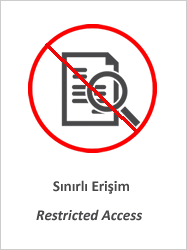A Low-Cost Microwave Hybrid Biosensor for Glucose Concentration Sensing
Citation
KÖSE, Umut & Mesut KARTAL. "A Low-Cost Microwave Hybrid Biosensor for Glucose Concentration Sensing". 2024 International Conference on Applied and Theoretical Electricity (ICATE), (2024): 1-5.Abstract
This study uses a hybrid biosensor consisting of a
patch antenna with a defected ground plane and a frequencyselective
surface (FSS) to detect glucose concentration in the
microwave frequency region. The sensing mechanism is based
on identifying the relative permittivity and loss tangent
variations caused by different ratios of glucose-distilled water
solutions placed in the area of the sample under test (SUT). This
study tested four glucose-distilled water solutions in the SUT
region: 72 mg/dL, 216 mg/dL, 330 mg/dL, and 600 mg/dL. The
Debye model is utilized to ascertain the dielectric characteristics
of the solutions. When the volume percentage of glucose in the
glucose-deionized water solutions in the SUT increased from 72
mg/dL to 600 mg/dL, a frequency shift of 44 MHz was observed
in the resonance frequency of the hybrid sensor called Sensor 1.
To show the effect of mutual coupling between the defected
ground plane and the FSS on sensitivity parameters in the
hybrid sensor structure, a new sensor called Sensor 2 was
designed. Sensor 2 has the same geometry and dimensional
parameters as Sensor 1 but only consists of a patch antenna with
a defected ground plane. A frequency shift of 7 MHz was noted
in the resonance frequency of Sensor 2 when the volume
percentage of glucose in the glucose-deionized water solutions in
the SUT increased from 72 mg/dL to 600 mg/dL. According to
the simulation results, the sensitivity of Sensor 1 was calculated
as 83.333 kHz/mg dL-1, while Sensor 2 was 13.258 kHz/mg dL-1.
Thus, it is shown that FSS can be used in antenna-based sensor
structures for sensitivity improvement.



















